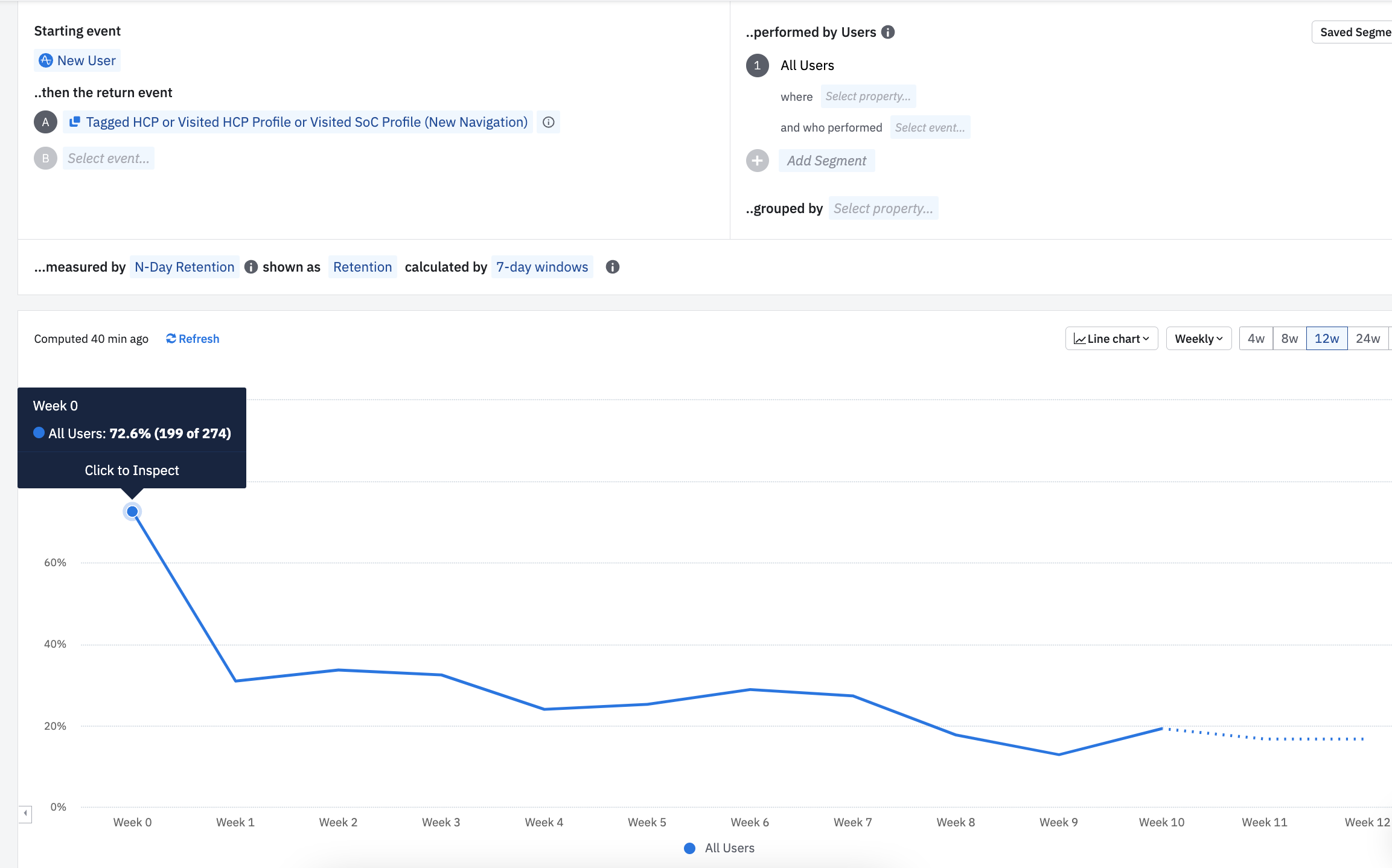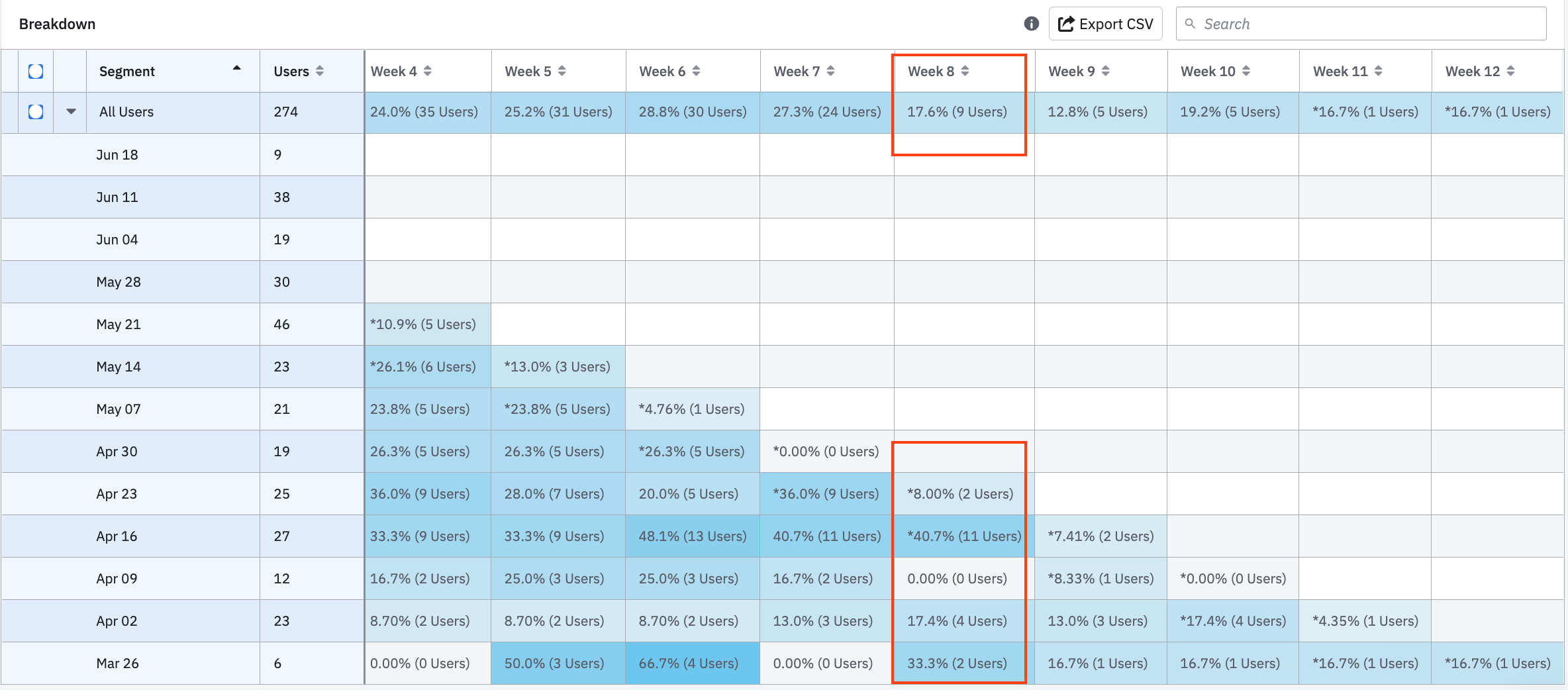- What do the numerator 199 and denominator 274 mean?
- How is week 2 to be interpreted?

- Why don’t these numbers add up?

- Why don’t these numbers add up?
- How is week 2 to be interpreted?
Hi
This is Yuanyuan from the Amplitude Support team - thank you for writing this post!
- a. 274 is the the number of users who performed the starting event “New User” in week 0 and 199 is the number of users who performed the returning event after the staring event. In retention, the denominator is always the user count that has had enough time to reach a certain week, and numerator is the user count that has performed the retuning event. Please note that only completed data will be taken into consideration. That means sometimes the denominator of week 0/day 0 does not apply to later weeks/days. For example, user A performed the starting event First Time Open on June 1, and user B on June 26th. For User A, June 1 is week 0 and June 27 (today) is week 3. This user will be counted in the denominator from week 0 to week 3. For user B, as this user just started yesterday and you are looking at 7-day window, they will only be counted in week 0 denominator.
b. week 2 is not a calendar week, but the time period of 15-22 days after the starting event is performed. So it is relative to all users. - The all user number shows you the deduplicated weighted average of retention rates and unique user count within the selected time frame. But the breakdown table of weekly retention is unique per week, meaning that one user can be counted in two or more weeks. So the sum of user count in the break down table is higher than the user count in the “All user’ row.
I strongly encourage you to explore our Help Center docs regarding interpreting Retention Analysis and FAQ: Retention analysis in Amplitude to learn more about Retention chart - one of our most popular and powerful charts at Amplitude.
I hope this is helpful to you.
Best,
Reply
Welcome to the Amplitude Community!
If you don't have an Amplitude account, you can create an Amplitude Starter account for free and enjoy direct access to the Community via SSO. Create an Amplitude account. You can also create a Guest account below!
If you're a current customer, select the domain you use to sign in with Amplitude.
analytics.amplitude.com analytics.eu.amplitude.comWelcome to the Amplitude Community!
If you don't have an Amplitude account, you can create an Amplitude Starter account for free and enjoy direct access to the Community via SSO. Create an Amplitude account. Want to sign up as a guest? Create a Community account.
If you're a current customer, select the domain you use to sign in with Amplitude.
analytics.amplitude.com analytics.eu.amplitude.comEnter your E-mail address. We'll send you an e-mail with instructions to reset your password.


